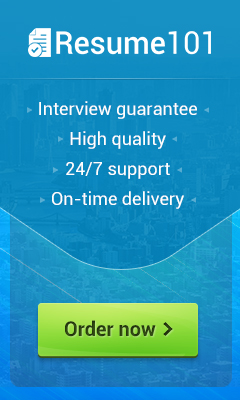
Resume Writing Guide for Job Seekers: Build a Document That Gets You Hired
In today’s fast-paced job market, your resume is more than a document — it is your personal brand, a snapshot of your skills, and the first impression you make on employers. A strong resume can open doors to interviews, while a weak one can close them instantly. Yet many job seekers still underestimate the importance of crafting a polished, professional, and tailored resume.
This guide will provide you with a complete breakdown of how to create a resume that stands out. From structure to writing tips, from mistakes to avoid to advanced strategies, you’ll learn how to transform your resume into a career-launching tool.
Why Your Resume Matters More Than Ever
Recruiters and hiring managers deal with overwhelming volumes of applications. Studies show they spend only 6–8 seconds scanning each resume before deciding whether to read further. That means your document needs to grab attention right away.
A resume should:
-
Highlight your achievements, not just job duties.
-
Use keywords relevant to the job description.
-
Communicate professionalism through format and tone.
-
Showcase measurable results that prove your value.
In short, a resume is not just a history of your career — it’s a marketing pitch for your future.
The Core Structure of a Professional Resume
Although creative designs are tempting, simplicity and clarity usually win. A professional resume should follow this structure:
1. Contact Information
Include your name, phone number, email, and LinkedIn profile. Make sure your email looks professional (firstname.lastname@email.com).
2. Professional Summary
This 3–4 sentence section is your introduction. Tailor it to the role you’re applying for.
Example: “Results-driven project manager with 8+ years of experience in IT and finance sectors. Skilled at leading cross-functional teams, cutting costs by 20%, and delivering projects ahead of schedule.”
3. Work Experience
List your positions in reverse chronological order. Each job entry should include:
-
Job title
-
Employer and location
-
Dates of employment
-
3–5 bullet points showing achievements
Always focus on accomplishments instead of responsibilities. Numbers help recruiters see impact: “Increased website traffic by 35% through SEO initiatives” is stronger than “responsible for SEO.”
4. Education
List degrees, universities, and graduation years. Add honors or relevant coursework if you’re early in your career.
5. Skills
Highlight both hard skills (technical abilities, software, languages) and soft skills (leadership, communication, problem-solving).
6. Additional Sections
Depending on your career, you may include certifications, awards, publications, or volunteer experience.
Writing Tips That Make a Resume Stand Out
-
Tailor each resume. Generic resumes rarely get interviews. Align your document with each job posting.
-
Use action verbs. Phrases like “achieved, developed, launched, managed” carry more impact.
-
Quantify your results. Numbers make achievements concrete.
-
Keep formatting simple. Clean fonts and consistent spacing improve readability and ATS compatibility.
-
Limit length. One page for entry-level candidates, two pages for professionals with 10+ years of experience.
-
Proofread. Typos and grammar errors are deal-breakers.
Resume Formats Explained
Choosing the right format depends on your career stage:
-
Chronological Resume — Best for candidates with steady work history. Highlights progression.
-
Functional Resume — Focuses on skills rather than jobs. Ideal for career changers or those with gaps.
-
Combination Resume — Blends both approaches. Great for mid-level professionals.
Most recruiters prefer chronological resumes, but if you are switching industries, a functional or hybrid style may highlight your transferable skills better.
Common Mistakes That Hurt Your Resume
Even highly skilled candidates often fail because of small errors. Avoid:
-
Using an unprofessional email address.
-
Adding unnecessary personal details like marital status or hobbies.
-
Overstuffing with keywords in unnatural ways.
-
Writing vague statements without results.
-
Sending resumes in uncommon file formats. Stick to PDF or Word.
Why Professional Resume Help Can Boost Your Career
While you can write your own resume, many job seekers find professional assistance invaluable. An expert can help with:
-
Tailoring your resume to match job descriptions.
-
Optimizing for Applicant Tracking Systems (ATS).
-
Highlighting achievements that you may overlook.
-
Ensuring grammar, formatting, and tone are flawless.
If you want to increase your chances of getting interviews, services like Resume101 offer professional guidance to make your resume shine in a competitive market.
Final Thoughts
Your resume is your passport to new career opportunities. By following proven structures, writing with clarity, and focusing on measurable achievements, you can transform it from a simple document into a powerful tool that markets your skills.
Investing time into creating a strong resume pays off with more interviews, better job offers, and faster career growth. Don’t think of it as paperwork — think of it as your personal success story waiting to be told.
